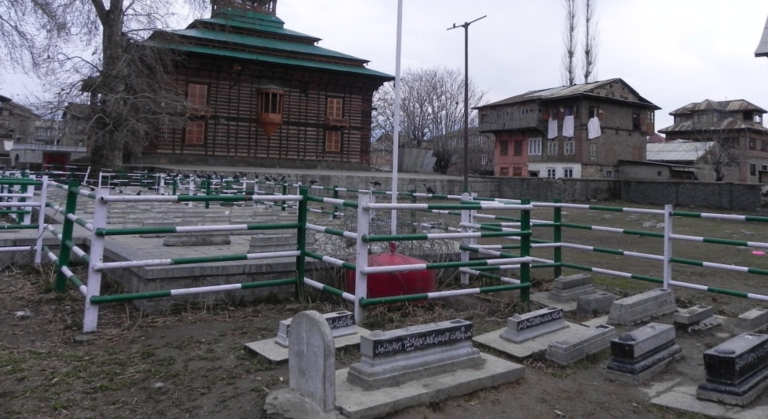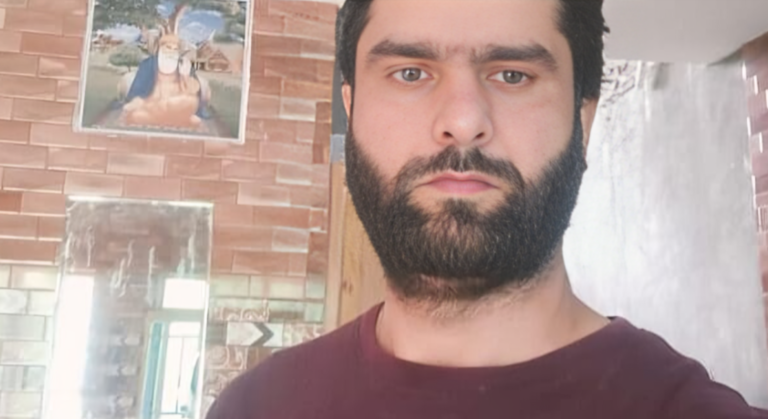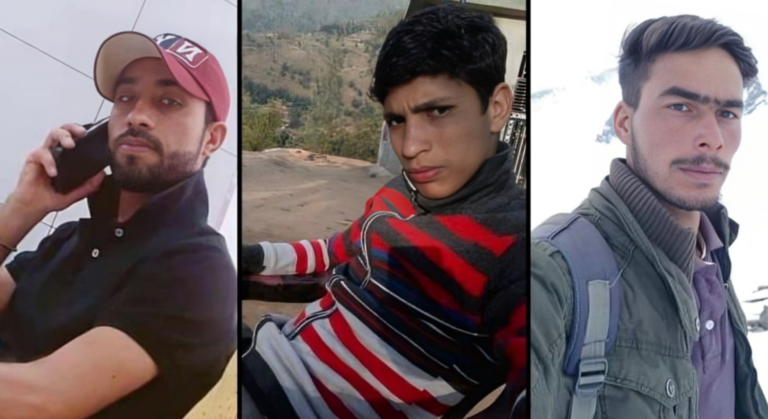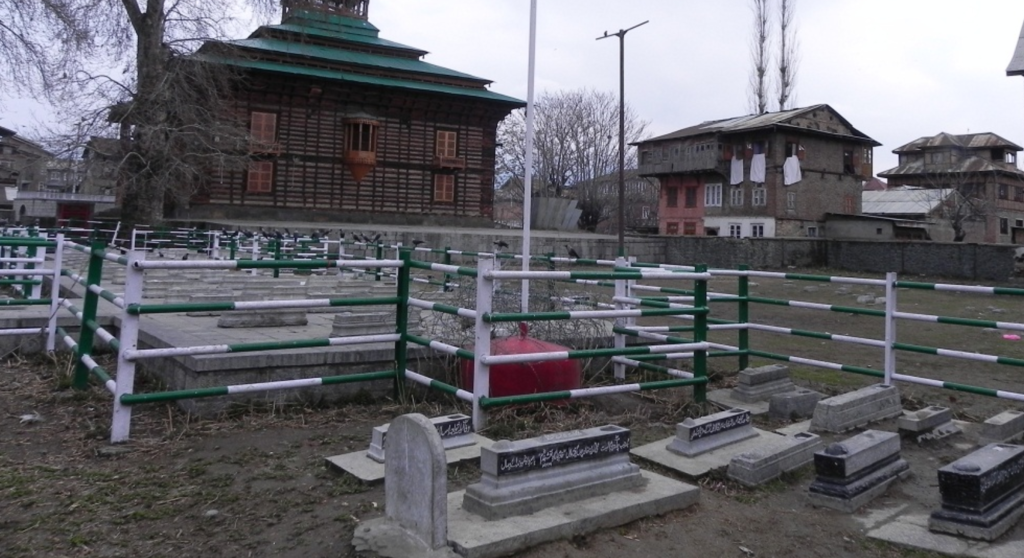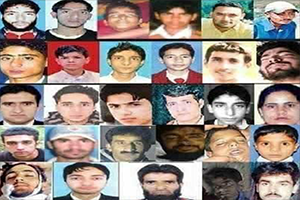
2010 Intifada, Teenage Killings and a Father’s Fight for Justice
Gowhar Farooq
The 2008 state elections in Kashmir witnessed a significant voter turnout of approximately 67 percent. This high participation was interpreted as a rejection of pro-freedom ideologies by the India. The National Congress, led by Omar Abdullah, emerged victorious, buoyed by promises of good governance and a commitment to addressing human rights violations. It is important to note that these politicians have been using slogans of autonomy, honour, addressing rights abuses, revoking draconian laws and development to lure people into voting. However, these assurances quickly dissipated as the daily reality of human rights abuses continued to plague the region.
Shortly after the elections, the rape and murder of two women in the Shopian district by Indian police personnel sparked widespread protests. The state government’s failure to conduct an impartial investigation and hold the perpetrators accountable further enraged the populace. By year’s end, the Central Bureau of Investigation (CBI) declared that the women had not been raped and murdered but had drowned—a conclusion met with widespread skepticism and seen as an attempt by the state to shield the guilty. This incident exemplified the ongoing struggle for justice and accountability in Kashmir. Omar Abdollah, the then chief minister of the region backed the CBI findings and termed the heinous act as an incident of drowning to shield the perpetrators. To this day, no one has been held accountable in the case, and the rapists of Asiya and Neelofar continue to roam freely. It is important to mention that India has been using rape as a weapon of war in the occupied region to quell dissent and crush the freedom movement in the territory. In June last year, two doctors who had concluded that the two ladies were murdered after being raped were dismissed from their services by the military administration. Dr. Bilal Ahmad and Nighat Shaheen were dismissed from services for “actively working with Pakistan” and fabricating evidence in the postmortem report.
Before the memory of the Shopian incident could fade from the collective consciousness of the Kashmiri people, another scandal erupted, this time involving a fake encounter. While such encounters were tragically familiar to Kashmiris, this particular episode ignited a fresh wave of unrest. On May 30, 2010, it was revealed that three young Kashmiris had been killed by an Indian army unit in the Machil sector and falsely labeled as “cross-border terrorists”. The true motive behind this staged encounter was to secure monetary rewards and promotions associated with actions on the Line of Control (LoC). In this context, the findings of the International People’s Tribunal on Human Rights and Justice in Indian occupied Kashmir (IPTK) are particularly noteworthy. According to the IPTK, over 20 individuals were killed in encounters during April and May 2010, each reported as the elimination of “infiltrating militants”. However, only four of these incidents were investigated, and all were confirmed to be fake encounters. The group suspects that the majority of the cases—335 in 2008 and 236 in 2009—involved local residents falsely labeled as “cross-border terrorists or Lashkar-e-Taiba (LeT) operatives”.
The revelation of the Machil killings acted as a catalyst, sparking widespread outrage among the Kashmiri population. Infuriated, Kashmiris flooded the streets in protest. Unlike previous demonstrations, this time, the youth confronted the occupational soldiers with stones. Tragically, during these protests, a 17-year-old student was killed by occupational soldiers on June 11, leading to a surge of protest demonstrations in which over 120 people lost their lives. Tufail Mattoo from Saida Kadal locality in Old Srinagar was killed in 2010 when they targeted him with a teargas shell on his head. Mattoo died on the spot as the shell broke his skull. The New York Times described the situation as a sweeping “intifada-like popular revolt.” The Indian government started using pellet guns in the valley thereby maiming people permanently.
India: The Child Killer of Kashmir
2010 was a tragic year for Kashmir, a year in which the region lost over 120 lives, most of them teenage boys. These young lives were snuffed out by Indian military and paramilitary forces thereby casting a dark shadow over the valley and marking India as the “child killer” of Kashmir. This brutal pattern of violence, far from being an isolated incident, has been a persistent strategy employed by Indian authorities both before and after 2010. The systematic targeting of Kashmir’s youth is a calculated attempt to crush the spirit of resistance and popular sentiment in the region. By framing young people in false cases, imprisoning them on dubious charges, and even resorting to extrajudicial killings, India has been deliberately dismantling the future of Kashmir. These actions are not just random acts of violence but a methodical campaign to destroy the aspirations and careers of the Kashmiri youth and effectively rob the region of its potential leaders and innovators.
History is rife with examples of colonizers and invaders targeting the younger generation of the territories they seek to dominate. This strategy is devastatingly effective, as the youth are the lifeblood of any society, the bearers of its future. They embody hope, progress, and the possibility of change. By crippling the younger generation, oppressors aim to break the spirit of the entire community, ensuring that resistance wanes over time.
In Kashmir, the loss of young lives is not just a series of tragic events; it is a profound wound inflicted on the collective consciousness of the region. Each life lost is a story unfinished, a potential unrealized. The teenage boys killed in 2010 were more than statistics; they were sons, brothers, friends, and students with dreams and aspirations. Their deaths represent a deliberate attempt to stifle the voice of Kashmir and to impose a narrative of fear and subjugation. The young generation is the cornerstone of every nation’s development and progress. They are the thinkers, creators, and leaders of tomorrow. The relentless targeting of young Kashmiris is an assault on the region’s ability to thrive and evolve and brutally crush any chances of the resistance movement becoming a formidable force capable enough of dragging India out of the region. India’s actions in Kashmir are a stark reminder of how oppressive regimes operate by using fear and violence to maintain control. Despite the relentless persecution, the youth of Kashmir continue to fight for their rights and their homeland. It is this spirit that gives hope for a future where Kashmiris can live in peace and dignity, free from oppression and violence.
Tufail Matto’s Death and His Fathers Fight for Justice
It has been more than 14 years since Tufail was killed in Shehr-e-Khaas (Old Srinagar) area of the Kashmir capital Srinagar. His father Bashir Ahmad Mattoo decided to fight for justice and bring the murderers of his teenage son to justice. Five years later, the case was closed due to the inability to trace witnesses. Undeterred, Tufail’s father, Muhammad Ashraf, pursued a legal battle for the case’s reinvestigation. Although the case was reopened, a resolution remains elusive. “My son has been in the grave for nearly ten years without justice. Despite the strong evidence, a fair trial was denied. Nonetheless, our struggle has exposed the system’s flaws,” Muhammad Ashraf Mattoo told a local newspaper reporter in 2020, a decade after his son’s death. Tufail, a Class 12 student at Government Higher Secondary School Hazratbal, had previously completed his Class 10 at Radiant Public School, Malla Bagh, Srinagar. On June 11, 2010, he was struck by a teargas shell near Rajouri Kadal, resulting in his immediate death. Ashraf left a lucrative job in Dubai to return to Srinagar and seek justice for his son. Now jobless, he supports his family with his savings, having dedicated his life to this cause, even if justice is never served in his lifetime. “I have committed myself to this fight. If justice eludes us here, I trust Allah will deliver it in the afterlife. My struggle aims to reveal a system devoid of respect for justice,” he further told the reporter. Knowing well the absurdity of fighting for justice in an occupied region, Ashraf’s struggle was more aimed at exposing the system and debunking India’s claim of having a democratic setup in Kashmir. And that is what the struggle of this age-old father devastated by the tragedy of losing his son has revealed. In an interview with Stand With Kashmir, Ashraf while answering a question about how his family coped with the loss all these years, Ashraf told that, “Tufail was our only child. Both my wife and I have rested our case with God. My wife is quiet and silent. I do talk about my son and discuss his case. I live with it every day. We both feel the pain deeply, but I talk about it and she doesn’t. We hope that God will deliver justice. No one dies unless it’s in his destiny but these killings are cold-blooded murders. These were innocent kids”. He further said that the whole National Conference, a pro-India party, should be prosecuted and that all countries should bar Omar Abdollah, Chief Minister (Chief Puppet) in 2010, from any visit.
Editor's Pick
Recent Reviews
Kashmir Martyrs’ Day commemorates the July 1931 incident, fueled by oppressive Dogra rule and rising discontent among Muslims. Protests erupted against injustices, leading to the killing of 22 demonstrators by state forces. This pivotal event ignited Kashmir’s struggle for rights and justice, marking a significant chapter in its history.

